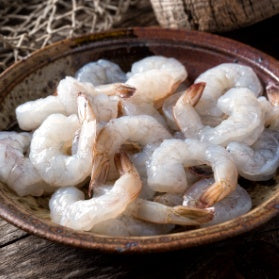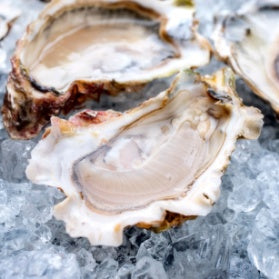Your Cart is Empty
FREE SHIPPING ON ALL ORDERS OVER $125!
FREE SHIPPING ON ALL ORDERS OVER $125!
FREE SHIPPING ON ALL ORDERS OVER $125!
TL;DR: The best way to thaw shrimp is in the refrigerator, but there are faster thawing methods available if you are tight on time.

Whether grilled, sautéed, or tossed in a vibrant seafood pasta, shrimp can be a stand-alone appetizer or a mouthwatering entree. But before enjoying some succulent shrimp, you will likely have to thaw them.
Thawing shrimp properly is crucial, not just for maintaining their crisp texture and fresh flavor, but also for ensuring they are safe to eat. Today, we're bringing you expert tips and tricks for how to defrost frozen shrimp, so they reach your plate in perfect condition every time.
When it comes to seafood, freshness is paramount. Frozen shrimp offers a convenient and delicious way to enjoy fresh shrimp, especially if you don't live near the coast. Seafood lovers choose frozen shrimp because it's:
No matter if you're crafting a shrimp cocktail or trying out a new shrimp recipe, you'll need to thaw your frozen shrimp. This is a crucial step to ensure your meal is safe and delicious, every time.
Improper thawing can turn your shrimp into a breeding ground for bacteria. This can happen if you leave your shrimp at room temperature - known as the “Danger Zone” - or thaw them in warm water. These methods cause the outer layer of shrimp to warm up faster than the inside.
Similarly, thawing shrimp too quickly or at a high temperature can cause your seafood to become mushy. It affects their natural firmness and causes them to lose more moisture when cooked, leading to an unappealing texture.
The best way to defrost shrimp involves keeping them cold to slowly thaw them. There are two acceptable methods for thawing.
This is our recommended method, and perhaps the easiest way, to thaw a bag of frozen shrimp, though it does require some planning ahead. Typically, it takes about 12-24 hours for shrimp to thaw completely in the refrigerator, depending on their size and quantity. Thawing shrimp in the refrigerator leads to the optimal texture, taste, and freshness.
Here are some tips to ensure even defrosting:
If the craving for shrimp suddenly hits, you can still thaw frozen shrimp in time for dinner. Shrimp typically thaw in about 1-2 hours using the cold-water method, depending on the size and quantity of the shrimp.
Here's how to safely thaw shrimp in a bowl of cold water:
Though this is not our recommended method, if you are very pressed for time and you need that shrimp quickly, you can thaw in 5-8 minutes, depending on the size and quantity of the shrimp.
Here's how to safely quick thaw shrimp under cold running water:
Have more questions about how to defrost shrimp? Here's a quick breakdown of everything we've covered today.
How do you defrost frozen shrimp?
The best methods to defrost frozen shrimp are either by refrigerating them overnight or using a quick thaw method under cold water.
Is it safe to thaw shrimp in cold water?
Yes, it's safe to thaw shrimp in cold water if the shrimp are sealed in a leak-proof bag and the water is changed every 30 minutes to ensure it remains cold.
Is it OK to defrost shrimp on the counter?
No, defrosting shrimp on the counter can lead to uneven and unsafe temperature changes, increasing the risk of bacterial growth. Always thaw shrimp in the refrigerator or under cold water.
What is the best way to thaw frozen shrimp?
Thawing shrimp in the refrigerator is considered the best way as it keeps the shrimp at a safe, constant temperature and maintains optimal texture and flavor. Putting the frozen shrimp in a bag and submerging in a bowl of cold water is also okay but requires more monitoring.
Can I cook frozen shrimp without thawing?
Yes, frozen shrimp can be cooked directly from frozen in many recipes, such as in stir-fries or soups. However, the additional moisture might affect their texture and overall cooking time.
How long does it take to thaw shrimp in the refrigerator?
It usually takes about 12-24 hours to thaw shrimp in the refrigerator, depending on the size and quantity of the shrimp.
Can I refreeze shrimp after thawing?
No, it's not recommended to refreeze shrimp once they have been thawed. This can lead to texture degradation and safety concerns.
Suddenly craving shrimp? Order sustainable seafood like shrimp, salmon, crab, & more from North Coast Seafoods today and have it delivered to your door.
Shoot us an email or fill out our Contact Form.
Comments will be approved before showing up.



Sign up to receive the best seafood recipes, first access to new products, exclusive discounts and more!